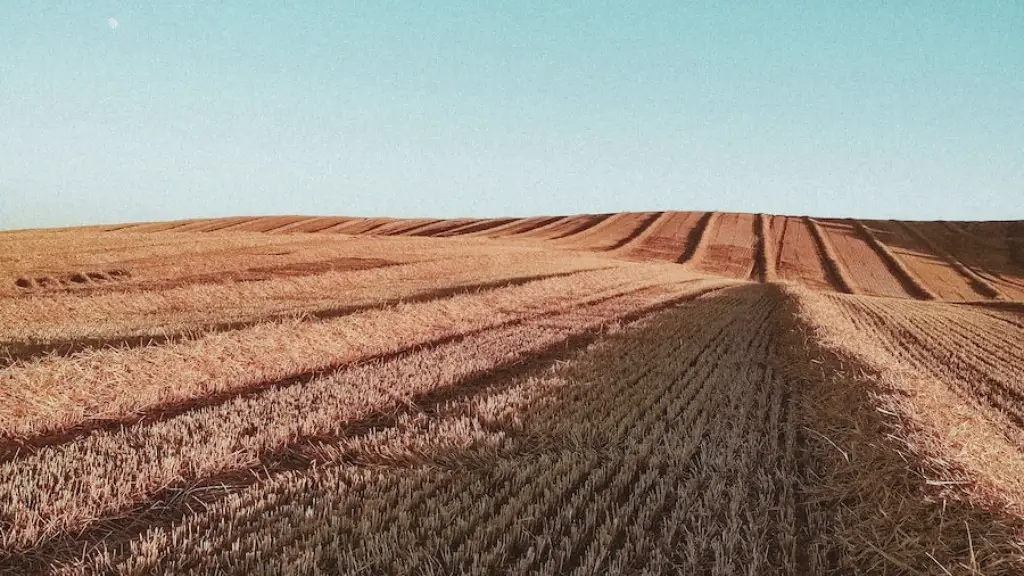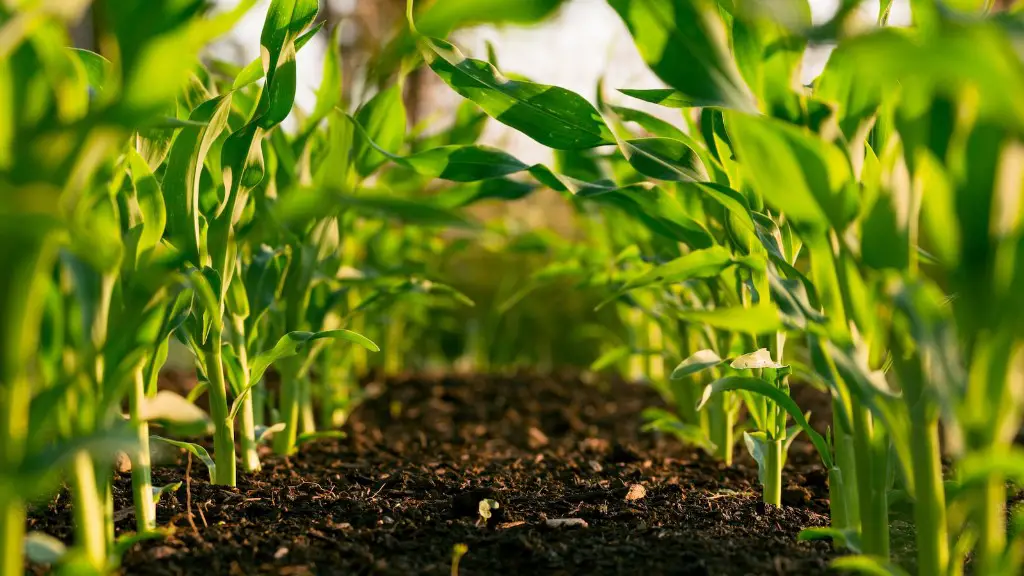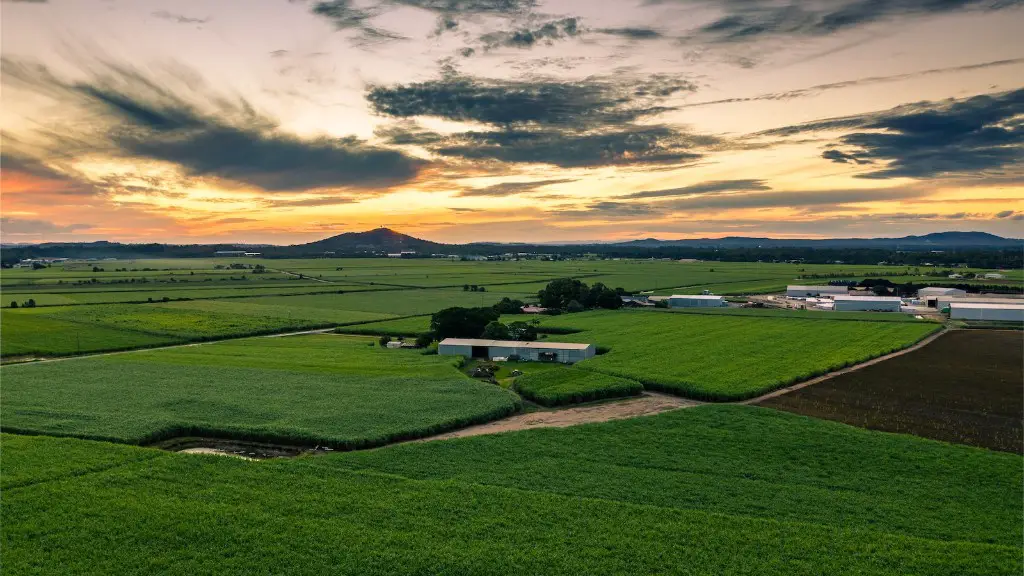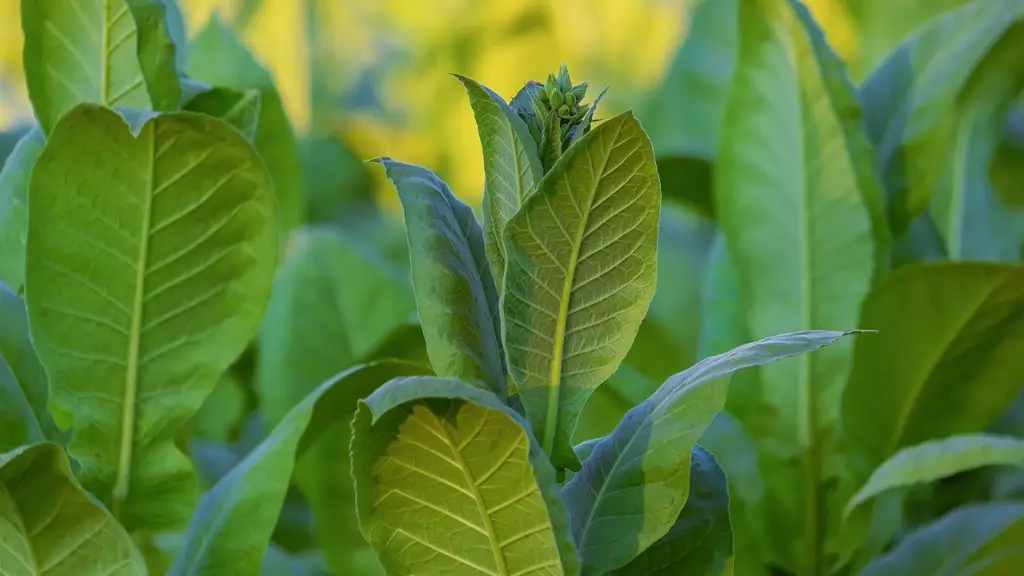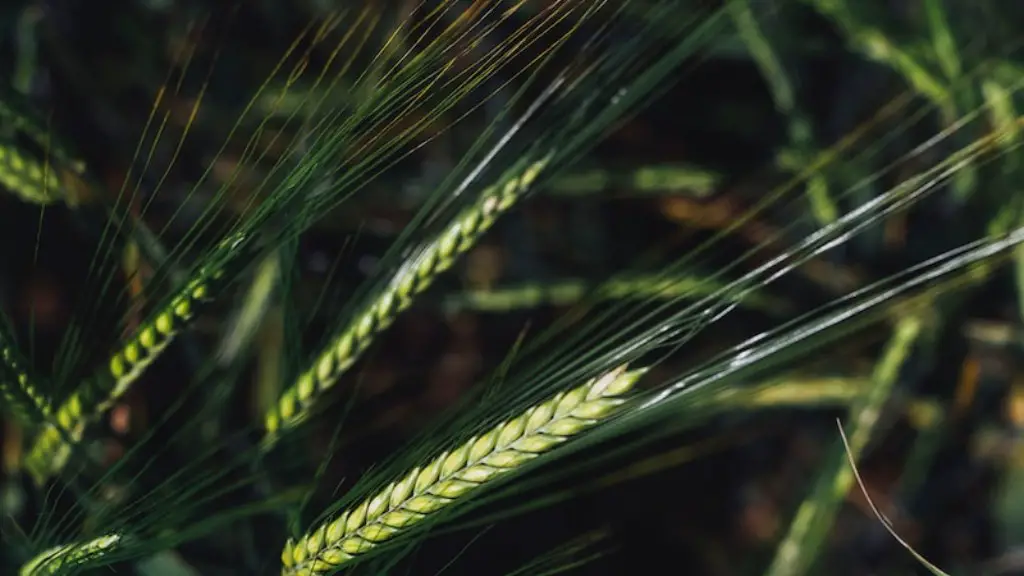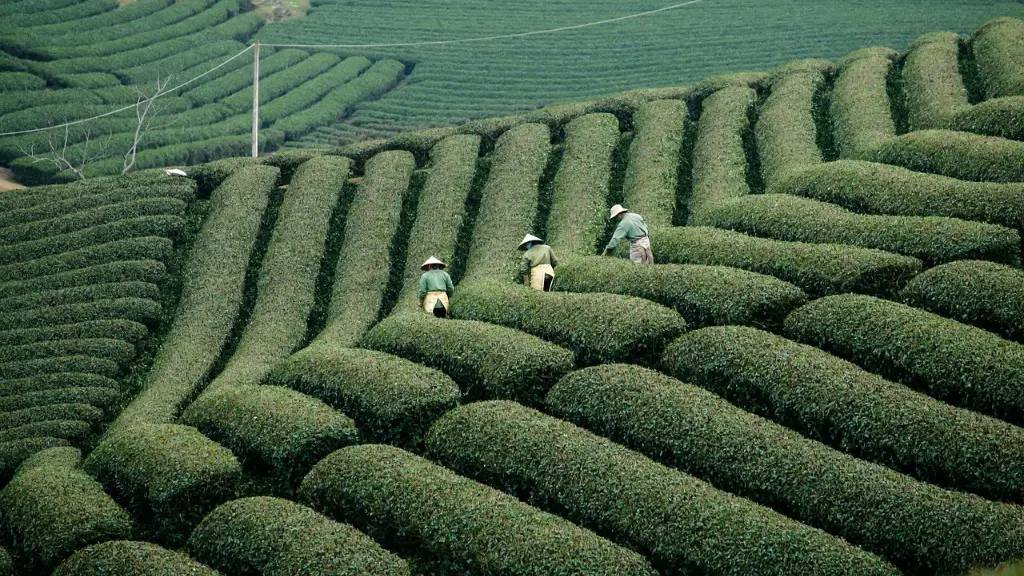New technologies in agriculture are constantly being developed to help farmers increase yields, decrease inputs, and improve environmental stewardship. Some of the latest advancements include drone technology for crop mapping and yield analysis, new varieties of genetically engineered crops, and improved irrigation and drainage systems. These new technologies are helping farmers around the world to produce more food with fewer resources and less impact on the environment.
Some new technologies in agriculture include:
1. Drones – Farmers are using drones to help with crop mapping and analysis, as well as identifying issues such as pests or water stress.
2. GPS and Variable Rate Technology – Farmers are using GPS to help map their crops and track data such as yield, soil moisture, etc. They can then use this information to adjust their inputs accordingly.
3. Big Data – Farmers are collecting ever-increasing amounts of data from various sources, such as weather, yield, and machine sensors. This data can help them make better decisions about their crops and operations.
4. Machine Learning – Farmers are using machine learning to develop models that can predict things like yield, pest pressures, and more. This information can help them make better decisions about their crops and operations.
5. robotics – Farmers are using robots for tasks such as weeding, fruit picking, and more. This can help reduce labor costs and improve efficiency.
What are 5 advancements in agriculture?
Precision Agriculture:
Precision agriculture is a farming management concept based on observing, measuring and responding to inter and intra-field variability in crops. The goal of precision agriculture is to optimize returns on inputs by reducing wastage, improving yield and reducing production costs.
Industrial Automation:
Industrial automation is the use of control systems, such as computers or robots, to perform a variety of tasks in a factory or other industrial setting. Automation has been increasingly adopted in agriculture in recent years, with the goal of reducing labor costs and improving efficiency.
Automated Irrigation Systems:
Automated irrigation systems are designed to provide the right amount of water to crops, when they need it. These systems can be controlled remotely, and can be programmed to respond to changes in weather conditions.
Remote Monitoring of Crops Using Sensors:
Sensors can be used to monitor a variety of conditions in crops, including temperature, humidity, soil moisture and more. This data can be transmitted to farmers in real-time, allowing them to make informed decisions about irrigation, fertilization and other management practices.
Genetically Modified Crops:
Genetically modified crops are plants that have been altered at
1. Reaper: A machine that cut small grains was invented in the early 1800s. This machine helped farmers to produce food faster and more efficiently.
2. Thresher: A machine that removed kernels from the straw was invented in the early 1800s. This machine helped farmers to produce food faster and more efficiently.
3. Steam Engine: A machine that powered farm equipment was invented in the early 1800s. This machine helped farmers to produce food faster and more efficiently.
4. Combine: A machine that harvested and threshed grains was invented in the early 1900s. This machine helped farmers to produce food faster and more efficiently.
5. Automobile: A machine that transported farm equipment and supplies was invented in the early 1900s. This machine helped farmers to produce food faster and more efficiently.
6. Tractor: A machine that pulled farm equipment and supplies was invented in the early 1900s. This machine helped farmers to produce food faster and more efficiently.
7. Hydraulics: A system that powered farm equipment was invented in the early 1900s. This system helped farmers to produce food faster and more efficiently.
What are the 7 new farming inventions
Technology is always changing the way farmers grow, transport, store, and manage their produce. From bee vectoring technologies to precision agriculture and indoor vertical farming, there are many new innovations that are making a big impact on the agriculture industry. Here are just a few of the most exciting new technologies that are changing the way farmers do business:
1. Bee Vectoring Technologies: This new technology uses bees to deliver pest control products directly to crops, which can help farmers reduce the amount of pesticides they use.
2. Precision Agriculture: This technology uses GPS and other data to help farmers more accurately target their crop inputs, which can save them money and increase yields.
3. Indoor Vertical Farming: This type of farming allows crops to be grown indoors in a controlled environment, which can reduce the need for pesticides and herbicides.
4. Livestock Farming Technology: There are many new technologies being used in livestock farming, from robotic milking machines to GPS tracking collars. These technologies can help farmers to improve the efficiency of their operations.
5. Laser Scarecrows: These devices use lasers to deter birds and other animals from damaging crops.
6. Farm Automation: There are many new types of farm
These sophisticated technologies are revolutionizing the way we farm and farm equipment is becoming more and more precise. This is making farming more efficient and profitable while also being more environmentally friendly.
What are 2 technologies that helped improve farming?
Precision agriculture and robotic systems are becoming more and more commonplace in the agricultural industry. These systems allow businesses to be more efficient and profitable, while also being more environmentally friendly. Today’s agriculture routinely uses sophisticated technologies such as robots, temperature and moisture sensors, aerial images, and GPS technology to help with the production of crops. These advanced devices and precision agriculture and robotic systems allow businesses to be more profitable, efficient, safer, and more environmentally friendly.
The Agricultural Revolution was a period of significant agricultural development that took place during the 18th and early 19th centuries. It was a time of increased productivity and new innovations that led to more efficient ways of farming. Some of the key agricultural inventions during this time include the cotton gin, cotton harvester, crop rotation, grain elevator, hay cultivation, milking machine, and plow. These inventions helped to make farming more efficient and productive, and led to an increase in the food supply. The Agricultural Revolution had a significant impact on the world and helped to shape the modern agricultural industry.
What are 4 ways to improve the agriculture?
There is a need to develop high-yield crops, boost irrigation, increase the use of fertilizers, and adopt genetically modified (GM) crops. In addition, market access, regulations, and governance should be improved. Finally, information technology should be better used in order to achieve these goals.
The agriculture industry is evolving and becoming more efficient through the use of automation and precision farming techniques. Automation, including the use of robots, drones, and autonomous tractors, can help farmers to reduce labor costs and increase productivity. Precision farming involves applying irrigation, fertilizers, and pesticides at variable rates, depending on the needs of crops, rather than uniformly applying them at set times, quantities, and frequencies. This approach can help to reduce inputs costs and improve crop yields.
What are some of the technologies farmers are using to improve farming
The agricultural industry is constantly evolving and developing new technologies to help farmers improve their operations. Drones are being used for livestock tracking, soil moisture sensors can help with irrigation, and plant and soil health is being monitored with ever-evolving processing technology. Remote monitoring is also becoming more prevalent, allowing farmers to keep an eye on their operations from anywhere. Security is also an important concern, as the agricultural industry is a prime target for theft and vandalism.
Smart farming is a new and exciting way to increase production and decrease the negative environmental impact of agriculture and cattle production. Smart farming technologies make it possible to increase production while using fewer resources, and to make better use of resources that are available. This can help to reduce the impact of agriculture on the environment, and to improve the quality of the products that are produced.
What are the 3 innovations of the agricultural revolution?
The Agricultural Revolution saw a number of important inventions that changed the way we farm today. These included the seed drill, invented by Englishman Jethro Tull in 1701, the threshing machine, usually credited to Scotsman Andrew Meikle in 1786, the cotton gin, invented by New Englander Eli Whitney in 1793, and the mechanical reaper, invented by Virginian Cyrus McCormick in 1831. These inventions helped to make farming more efficient and increased production, which led to lower food prices and improved living standards for many people.
The four key innovations mentioned transformed agricultural production in the 20th and early 21st centuries by making it more efficient and easier to manage. The internal combustion engine allowed for mechanization of many tasks, while the Haber-Bosch process made nitrogen fertilizer more readily available. Hybrid corn and crop genetics allowed for more reliable yields, and farm chemicals made crop production easier to control.
What technology did farmers use
With a global population that is ever-growing and rising, farm automation has become a hot topic in the agricultural industry. There are a number of different technologies that are being used by farms in order to automate various processes, including harvest automation, autonomous tractors, seeding and weeding, and drones. Each of these technologies comes with a unique set of benefits that can help to address common issues faced by farmers, such as labor shortages and changing consumer preferences.
US farmers and livestock producers are facing uncertain times, with three major issues hanging over their heads: agricultural trade, tax reform and the new farm bill. All of these could have a major impact on the industry, and it’s hard to say which way things will go. Farmers will just have to wait and see what happens.
What is the best system for improving agriculture?
Water management is a critical issue for farmers and agricultural production. By using the sprinkler irrigation system, farmers can increase their output by up to 50%. By manufacturing canals and tube wells, farmers can get a better irrigation system for the safety of their crops.
Modern farming methods make use of a variety of techniques and technology in order to increase yields and productivity. Some of these methods include aeroponics, aquaponics, hydroponics, monoculture, tissue culture, and vertical farming. Drones are also increasingly being used in modern farming in order to help with tasks such as crop mapping and spraying. Hybrid seed technology is also playing a role in modern farming, as it allows for the production of higher-yielding and more disease-resistant crops.
Final Words
Some new technologies in agriculture include things like precision farming, which uses GPS and sensors to more accurately target planting, fertilizer, and pesticide use. Drones are also being used for crop mapping and disease identification.
The adoption of new technologies in agriculture is crucial in order to meet the demands of a growing population. New technologies can help farmers increase yields, reduce costs, and improve sustainability. Some of the latest technologies being adopted in agriculture include precision farming, drones, and robotics. By embracing new technologies, farmers can continue to produce the food that we need to feed the world.
